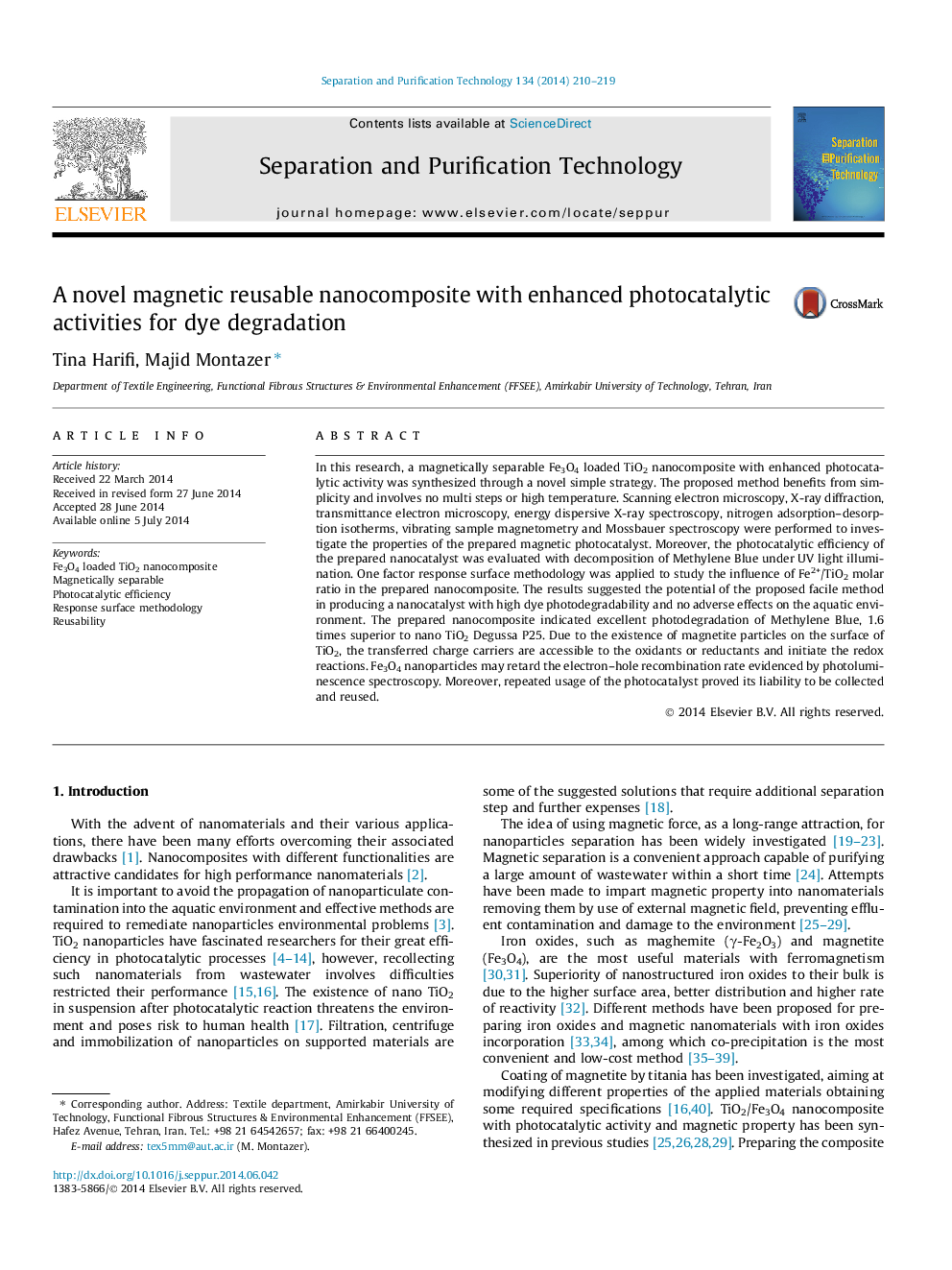| Article ID | Journal | Published Year | Pages | File Type |
|---|---|---|---|---|
| 641172 | Separation and Purification Technology | 2014 | 10 Pages |
•Proposing a facile method for the preparation of magnetic/photocatalytic composite.•Synthesis of magnetic reusable TiO2/Fe3O4 catalyst with high photodegradation ability.•Determining a possible mechanism of photocatalytic performance.•Optimizing the TiO2 ratio in the nanocomposite based on the statistical analysis.
In this research, a magnetically separable Fe3O4 loaded TiO2 nanocomposite with enhanced photocatalytic activity was synthesized through a novel simple strategy. The proposed method benefits from simplicity and involves no multi steps or high temperature. Scanning electron microscopy, X-ray diffraction, transmittance electron microscopy, energy dispersive X-ray spectroscopy, nitrogen adsorption–desorption isotherms, vibrating sample magnetometry and Mossbauer spectroscopy were performed to investigate the properties of the prepared magnetic photocatalyst. Moreover, the photocatalytic efficiency of the prepared nanocatalyst was evaluated with decomposition of Methylene Blue under UV light illumination. One factor response surface methodology was applied to study the influence of Fe2+/TiO2 molar ratio in the prepared nanocomposite. The results suggested the potential of the proposed facile method in producing a nanocatalyst with high dye photodegradability and no adverse effects on the aquatic environment. The prepared nanocomposite indicated excellent photodegradation of Methylene Blue, 1.6 times superior to nano TiO2 Degussa P25. Due to the existence of magnetite particles on the surface of TiO2, the transferred charge carriers are accessible to the oxidants or reductants and initiate the redox reactions. Fe3O4 nanoparticles may retard the electron–hole recombination rate evidenced by photoluminescence spectroscopy. Moreover, repeated usage of the photocatalyst proved its liability to be collected and reused.
